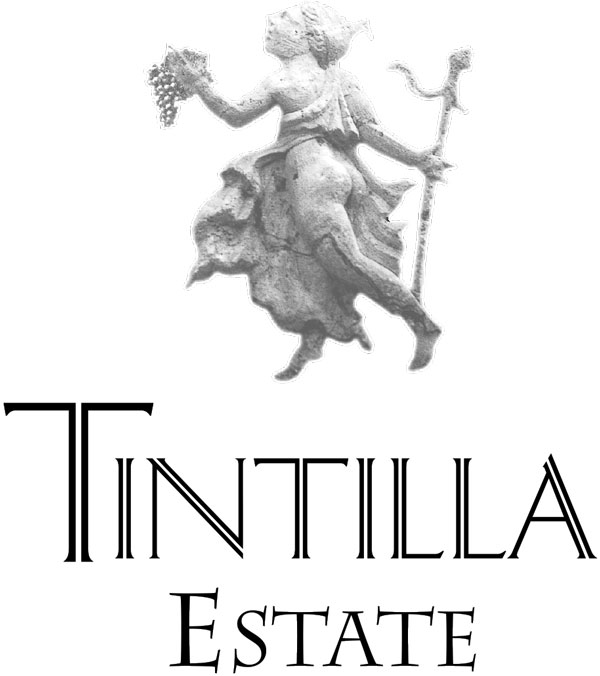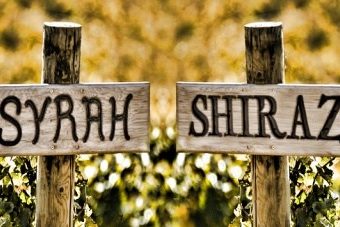“The moving finger writes, and having written moves on. Nor all thy piety nor all thy wit, can cancel half a line of it”
“Here with a Loaf of Bread beneath the Brough, a Flask of Wine, a Book of Verse – and Thou beside me singing in the Wilderness – And Wilderness is Paradise enow”

A scene from the Rubaiyat of Omar Khayyam translated by Edward Fitzgerald illustrated by Edmund Dulac
Two quotes that were written by the Persian mathematician and poet Omar Khayyam, living in the then capital of the wine trade, Shiraz in Iran, during the time of the Crusades. In his famous book of poems the Rubaiyat of Omar Khayyam, he included many verses on the enjoyment of wine and praised the wines of Shiraz.
Little wonder then that the legend developed as reported by James Busby, that the plants of the Hill of Hermitage were” brought from Shiraz by one of the hermits on the mountain”.
It was said they returned from the crusades having been inspired by what they saw in Shiraz.
In the same footnote in his Journal Busby quoted the Oenologie Francaise published in 1826 which spelt the name of the grape Seyras in accordance with the tradition of its Persian origin. (a word not too remote from Shiraz)
In his appendix to his Journal, he lists the grape – 45. Ciras—Cavoleau, Scyras “making the best Red wine of Hermitage”. He had acquired 12 cuttings from M. Machon, selected from young vines which should produce for 30 years!
We of course now know it as Syrah and genetic testing would suggest it is indigenous to the Rhone valley going back to Roman times. From the vine family vitus allobrogica, Pliny the elder mentioned producing famous and prized wines from dark-skinned grapes around the area which today would be the Cȏte-Rȏtie near Hermitage. Recent DNA testing suggests Syrah is the offspring of two obscure grape varieties from Southeastern France- Dureza and Mondeuse and probably it first appeared in the northern Rhone.
In France, the Hermitage region stands on the 45th parallel about as far north as is possible for ripening. The combination of granite soils that store and reflect heat at night and the south sloping aspect is essential for the warmth that enables the grapes to mature with both sugar and phenolic ripeness. In contrast, the Hunter at 32.6 degrees south, is a warm climate, obtaining both fruit and phenolic ripeness. It is modified by the cloud cover and sea breezes in summer which prolongs the ripening time in an otherwise warm climate and allows the grapes to mature with soft complex characters.
We all recognise the distinctive taste of Hunter Shiraz with its moderately soft tannic structure, rich mouth-filling berry flavour and tendency to secondary developed flavours of earthiness, dark chocolate, cigar box and gamey characters. Syrah tends to have a more youthful edginess reflecting its cooler climate but the elements of the primary and secondary characters are similar.
Interestingly both Syrah from Hermitage and Hunter Shiraz over time move closer together in their flavour and structural characteristics developing silkiness to their texture and losing their Regionality. These wines are long livers and for those of us who are prepared to wait, they are most rewarding.
Not surprisingly because of its nature Shiraz has become the most rapidly developing wine varietal worldwide adding up to 150,000 ha per year recently. Syrah has had an enormous surge in popularity in Southern France where the warmer climate allows full maturation. In the vineyards around Chateauneuf-du-Pape, it has been blended with Grenache to add to the life of the local wine. (Note the SA blends) While France is greater than Australia in volume, the plantings only account for 7-8% of French vineyard area whereas in Australia shiraz occupies 26% of our vineyard area.
China has discovered Shiraz with rapid growth in sales since 2014. The export market is most interested in high-quality Shiraz, with premium quality exports at record highs. The Hunter is in a good position to contribute because of the quality of our wines but our exports are down compared to South Australia due to the strong local consumption and tourist market that exists here. These points were made by Mark Rowley at a seminar held at Tuscany Estate last year looking at Shiraz.
This renewed interest in Shiraz has led to a closer look at clonal selection given that much of what we grow comes from the early colonial imports and the fact that the French are looking at improving their vines for better quality-nothing like competition. In the Northern Rhone, two clonal types have been noted-a small-berried superior quality Petite Syrah ( not to be confused with the Californian grape) and a larger berried Grosse Syrah.
In Australia, early efforts at clonal selection were made in the 1960’s in the Barossa by Harry Tullock, out of which came clone1654SA where yield, trueness to type and visual appearance of being free of virus were key and the taste did not really count. This clone is now the commonest in SA. More recently efforts to find newer clones with an emphasis on taste as well as the traditional factors has been undertaken but it has taken some 30 years to develop, and into the mix also have been some new French clones, the first in 150 years!
Sensory elements such as spicy, perfumed, savoury, aromatic and mouthfeel are all considered in an effort to add to diversity and complexity. Of course, for those who are believers there is also interest in “clones for climate change” Lessons learnt in the Hunter after the last drought included the mistake of using Swartsman rootstock (said to be drought resistant) but come the rains and the plants went beserk!
The origins of the Hunter shiraz clones is interesting and there is no doubt the Busby collection brought back in 1832 and planted at Kirkton’, his family property on the Hunter River is important. Prior to travelling to Europe specifically to get a well-documented collection Busby had organized the collection and tabulation of vines for distribution to farmers from prominent early pioneers such as Gregory Blaxland, William Macarthur, Rev. Samuel Marsden, and others.
Interesting Macarthur had brought back Burgundy and Millers Burgundy vines from France and propagated both from cuttings and seeds. Busby thought the seed propagated vines may well adapt to the new environment and selection of strong ones may be of value, but was cautious in recommending it. This was well before the Augustinian friar Gregor Mendel published his famous work on seed genetics -Mendelian inheritance as it became known.
In his Manual for Vineyards and Making Wine he mentions a Mr Alexander Riley of London as having sent red and white Hermitage grapes to the colony, and Macarthur complained some of his cuttings were swapped at the Cape and did not arrive in Australia.

An add from the Maitland Mercury, 1847 offering among other things Red Hermitage cuttings
So how long did it take to build up enough vines to create a vineyard? Busby estimated 1 acre in one season would give enough cuttings for 20 acres the next season. I suspect seed propagation played a part as described by Macarthur so that pure clonal breeding did not occur. This would have sped up the availability of vines and may well have given clonal variation to our vines.
Busby commented on this aspect of propagation in his Treatise on the culture of the vine, where he found a diversity of unsatisfactory opinions. He pointed out that “cuttings, layers, or buds have the advantage of perpetuating the peculiar qualities of the individual variety” He made the point that the “unlettered vigneron of France is scarcely aware that seed is a method of propagation” and despite the writings of the possibility, the reality is seed propagation does not occur today.
In fact, he noted to” effect a change in the physical appearance of the vine, and still more, in the qualities of its fruits; it is only necessary to change the circumstances in which it is placed, as regards climate, or soil and situation.”
Indeed as we have seen this year, the season may have a greater effect on bunch morphology than clone. Vineyard site will also have an effect. Busby noted that the combination of wines blended from the top, middle and bottom of the Hill of Hermitage was better than the individual blocks alone. In fact, there was a wave of limestone-rich soil in the middle of the hill that produced far better fruit than the granite derived soils above and below. Around Pokolbin, there are pockets of limestone enriched soils such as along Hermitage Road, along with the Belford Dome of Limestone, that produces excellent Shiraz fruit.
So in the Hunter, we are fortunate to have a mix of Shiraz clones, many old vines coming from the Busby plantings and natural clonal selection (replants over the years), some of the more recent being PT23 (Griffith Pruning Trial 23). We need to keep a close eye on new clonal developments as the competition from new plantings worldwide could impact on our trade. Given the complexity of adapting newer clones, it may well be wise to hasten slowly-possibly replants in established vineyards could include some newer clones to broaden the mix. To add to the complexity it may be possible to use cuttings from some of the 11 blocks of older than 100-year vines still in the Pokolbin area, although this idea has not been developed- we do not have a local vine improvement society as seen in SA.
So going back a thousand years we should be grateful for the influence of Shiraz on our appreciation of wine. In the words of the poet
“o pure elixir, essence crystalline!
In thee, I’ll soak these crazy bones of mine,
That whosoever sees me from afar
Will cry, ’Whence comest thou, good Master Wine?’
Bibliography
Khayyam, O. (1909). Rubaiyat of Omar Khayyam. Translated into English verse by Edward Fitzgerald. London.
Busby, J. (1833). Journal of a tour through some of the vineyards of Spain and France. Sydney: Stephens and Stokes.
Busby, J. (1830). A Manual of plain directions for planting and cultivating vineyards and for making wine in New South Wales. Sydney: R Mansfield.
Robinson, J. and Harding, J. (1994). The Oxford companion to wine. Oxford University Press.
Notes from a seminar on Shiraz at Tuscany Estate Hunter Valley, Wine Industry Association 2017
Author: Robert Lusby AM
©Around Hermitage Association Inc.


